From my husband Tom:
Susan is temporarily handing over the keys to the blog post to me. I’ll see to it that you continue to receive your regular dose of fabric collage content by revisiting my favorite posts. So for three weeks here at the end of Summer, I’ll show off some of Susan’s quilts. You may have seen them before, but like all art, another viewing may reveal things you hadn’t or weren’t ready to see before. I hope they inspire you.
I chose “Gombessa” as one of my favorite quilts of Susan’s because of its story. Susan is always encouraging her students to create a “backstory” for the subject of their quilt. Sometimes, as with a portrait of a family member, that story is “built in.” Other times a story has to be made up. In this case, Susan’s inspiration came from a book that I recommended to her after reading it myself. The story of the re-discovery of the ancient coelacanth is a fascinating one. It certainly inspired Susan! Today’s post will give you the brief version of that story and tell how that story drove the decisions she made in the quilt’s creation.
Susan will be back soon. We all encounter periods in our lives that are more challenging than others. Physical or mental illness, professional setbacks, natural disasters, and so on. This is part and parcel of being human. We recover, given time, enough to rediscover joy.
Susan is undergoing one of those periods, having lost her mother and father within five months of each other. Her way of rediscovering joy is spending time in her studio working on her next spectacular fabric collage quilt, which has a deadline of early September. Creativity is her balm. So while she replenishes her spirit we can enjoy her past quilts and look forward to the completion of her next work of art.
Susan has also encouraged me to share with you a passion of mine: sea kayaking. I enjoy the sport for so many reasons. Increasingly, I have found the social aspect of paddling with friends most beneficial. Then there is the restful and curative power of being in nature: the ocean, the islands, the wildlife. And of course it is a physical activity to offset the many hours I spend in front of a computer screen. In the next few weeks I’ll drop a sampling of videos I have produced around my adventures.
—Tom
Quilt Stories: “Gombessa”
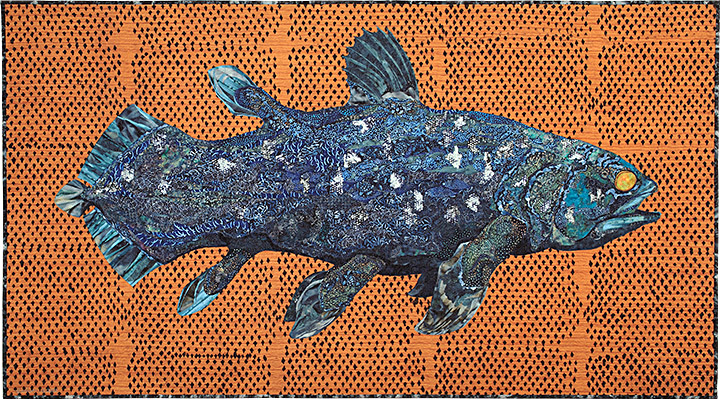
Over the next few weeks, I’ll be highlighting each of the ten quilts (plus marabou stork) going into my Specimens exhibit at this year’s International Quilt Festival in Houston. This week I introduce Gombessa, my fabric collage of an ancient fish, a full-sized coelacanth (SEEL-uh-kanth) that I made in 2006.
I had heard of coelacanths before, but I didn’t know about them until I read a book, A Fish Caught in Time by Samantha Weinberg. It had been a Christmas gift for my husband, and when he finished it he handed it to me and said, “Here, I think you’d like this.”
The story of this fish reads like a scientific mystery. It was previously only known through fossils dating from the time of the dinosaurs, 400 million years ago, and thought to have gone extinct with the dinosaurs 65 million years ago. Then, in 1938, a “specimen” was noticed by a museum employee in an African fish market—the fish being quite recently deceased. It was purchased, brought to the museum, and determined to indeed be a coelacanth. Needless to say, scientists and ichthyologists were in an uproar.
When I read a description of the five foot fish that lives at incredible depths, has limb-like fins and luminescent eyes, it went on my list of “to-do” quilts for my (sometime-in-the) future Specimens dream show. It was something about the description, I could just see it in my mind.
I started as I do with most of my creatures, with some research. The description in Weinberg’s book talked about a fish colored a variety of blues with cloudy white spots. Later in the book (spoiler alert!), the coelacanth was found to live in the deep waters off Madagascar. Then decades later, in the 1970’s when submersibles started being used for ocean exploration, more of these unusual fish were found on the other side of the Indian Ocean in Indonesia.
Well, that answered my “where do I start with fabric selection?” question—with Indonesian batiks, of course. As most of us fabric lovers well know, indigo blue is a common color in batiks. I even happened to have a dark blue batik with cloudy white spots in my stash.
As serendipity would have it, around that same time there was an art exhibit at a local college with the theme of “Cryptozoology.” This is defined in Wikipedia as “a pseudoscience with the goal of identifying and describing beings from the folklore and the fossil record, which cryptozoologists refer to as cryptids. These include creatures that are otherwise considered extinct or beings from folklore, such as Bigfoot and chupacabras.”
Just about any of those creatures would make very cool collage subjects, however, there was also a sculpture of a coelacanth. It was like I could study the fish in real life. The colors that artist chose were not how I had imagined them, but the rendition helped me with drawing the general form onto my foundation fabric.
In the photo above, I’ve filled in the body with larger chunks of fabric, much like I did with Polka Dodo, which is one way of working with fabric collage, though not the way I tend to work nowadays (such as the marabou stork).
In any case, gradually the drawn shape gets filled in and elaborated on with more and more pieces of fabric. In the photo above, I added the “luminescent eye”—my interpretation of the description in the book. In the photo below, details added to the front fin are noticeable.
Going back ten years into my photo archives, I realize how much better I am now at taking in-progress photos. Of course I didn’t have a blog then, and a need to explain the steps to you, my reader.
So this is the last progress shot I have of this big gal (research told me that the females are larger than the males, and I wanted to show a coelacanth in its full glory) coming at you from my pinning board.
The next photos I have are the final quilted version. But still, you can see the fabric details added, especially to the body. If I remember right, I came across a treasure trove of indigo batiks at a quilt show and had to use as many as possible in the final drafts. So much of the original fabric pieces ended up being covered up. Note the white spots that came from from one of the fabrics pictured in the very first progress photo.
Final fabric choice was the background. I mentioned earlier that these fish are found on both sides of the Indian Ocean—Indonesia and Madagascar, which is off the eastern coast of Africa. I used Indonesian batiks for the fish itself, so a hand-printed African cloth (found at quilt show booth) made a perfect background. Together, those fabrics placed my specimen in her location in the world.
I titled this piece Gombessa, the name African fishermen have always called this fish. The way I see it, coelacanth is the name scientists gave to the fossilized fish. In reality, it was there all the time, just waiting to be “discovered.”
Final photos I found from 2006 were from two art shows I participated in. This one shows the size and scale of Gombessa, and me in a favorite sweater jacket made by my mom. She makes ones like this from felted and repurposed sweaters. I’ve snagged a few such creations of hers over the years.
Early December is a perennial art show at the Button Factory in Portsmouth, NH. For years my spot was this narrow bit of hallway space. I no longer attend this show, but if you have a chance, I highly recommend checking it out. Pretty amazing artwork in an interesting old button factory. 2006 was a prolific year for me and I had not only Gombessa, but Polka Dodo, Tickled Pink (2005), and numerous smaller bugs and butterflies to display.
Immediately after that show, I exhibited the quilts at Portsmouth Fabric Company on their Brick Wall Gallery (below). Eons ago I was manager at Portsmouth Fabric Company, and I can honestly say that if you ever find yourself traveling through NH and past Portsmouth, it’s well worth the stop—packed to the gills with gorgeous fabrics in a picturesque old port area of the town.
Specimens quilts and their blog links so far:
Marabou Stork, Samuelsaurus Rex, Tickled Pink, Golden Temple of the Good Girls (and also in this link), Dixie Dingo Dreaming, and Crocodylus Smylus: part 1, part 2, part 3
Live Online Classes Fall 2023
For more information on both classes, click here.
September 25-29, 2023
Live Online Fabric Collage ALL LEVELS Class with Susan Carlson–Animals Only
Class size is limited to 10 students.
$1,195
Subject matter limited to animals only. Suitable for all levels of students. Subjects limited to animals.
October 16-20, 2023
Live Online ADVANCED STUDENTS Class with Susan Carlson
Class size is limited to 8 students.
$1,495
In an advanced class we ask that a student have taken at least two classes or other fabric collage learning venues from Susan (e-Workshops, private coaching, Patreon Show-and-Share) so I have an idea if this level will be a good fit for you. If so, Tom will then send you a link to sign up for the class.
Facial Features eWorkshop
Click here for more information.
- Eight videos (over 8 hours combined length) collected into one convenient and organized spot
- Each annotated with “Jump Points” allowing you to scan forward and backward to the information you need
- Facial Features Templates included as PDF’s to download and work along with
- Like the Fabric Collage Online Master Class, membership in this eWorkshop is for life
$99
BUY NOW
(With a special Summertime offer good from now through August 31st, 2023)
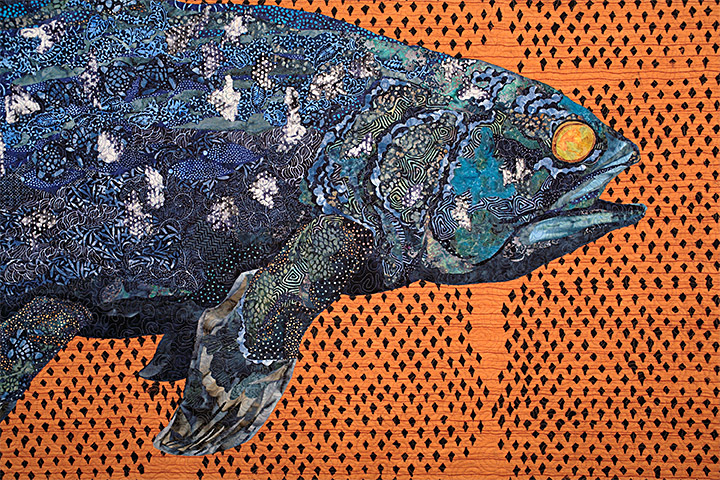
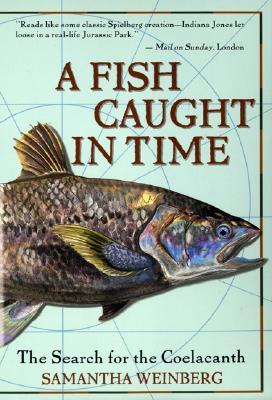
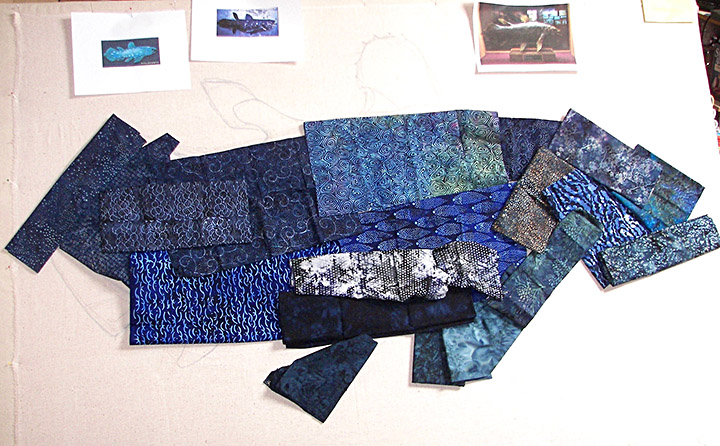
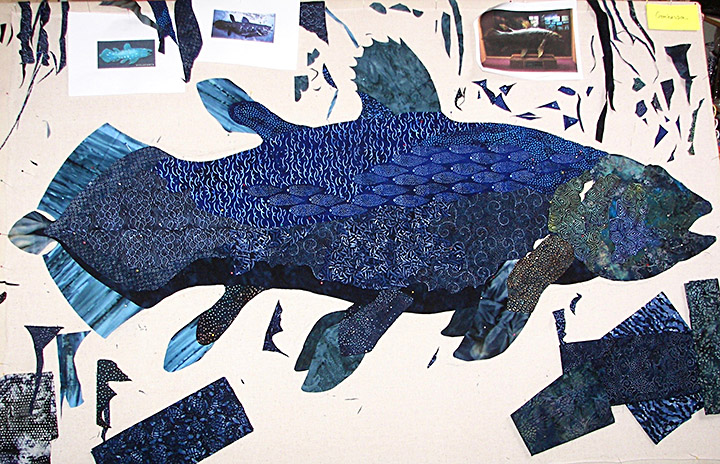
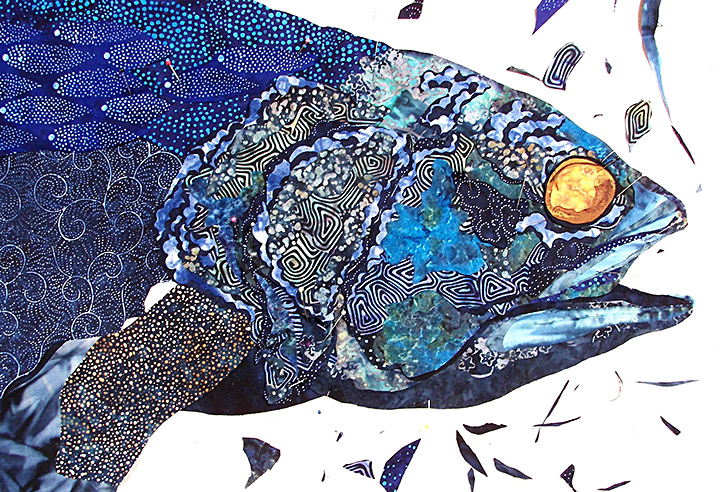
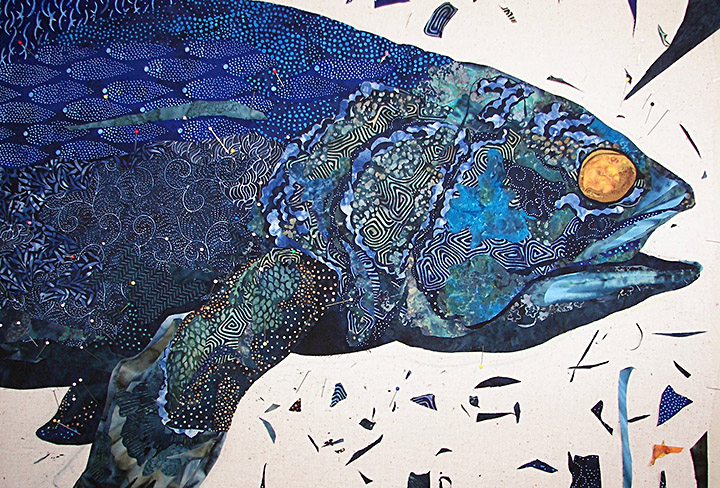
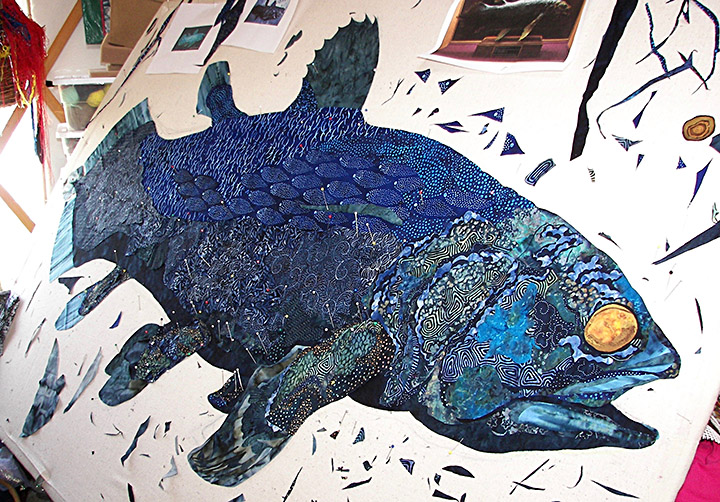

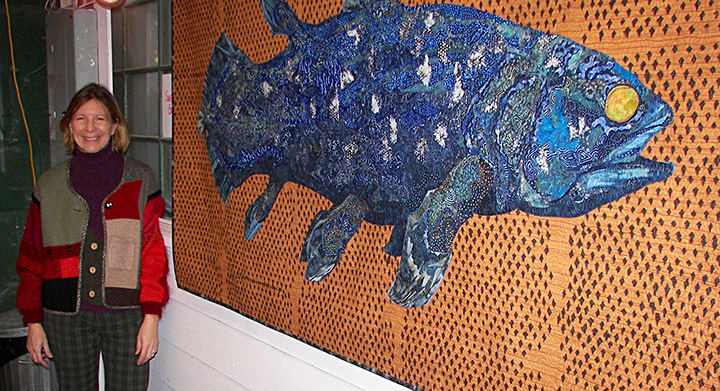
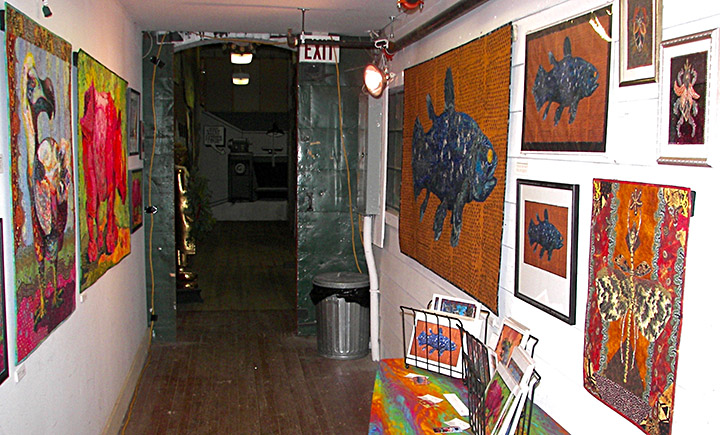
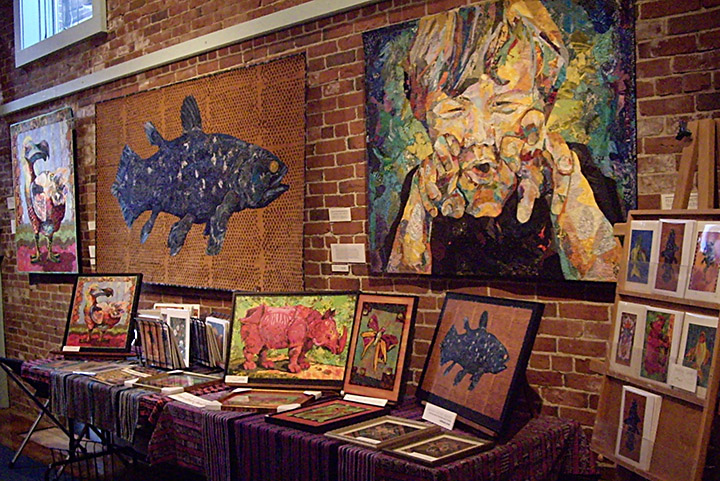





Hello Susan,
I love Gombessa! We are within two weeks from a vacation to Africa! You are such an inspiration. My sketch pad is packed along with my camera. Any suggestions, we’re going to South Africa, Zambia, Zimbawe and Botswana. I love your work so much. I haven’t found a subject that I’m crazy about to use your creative technique on. I hope to find one there!